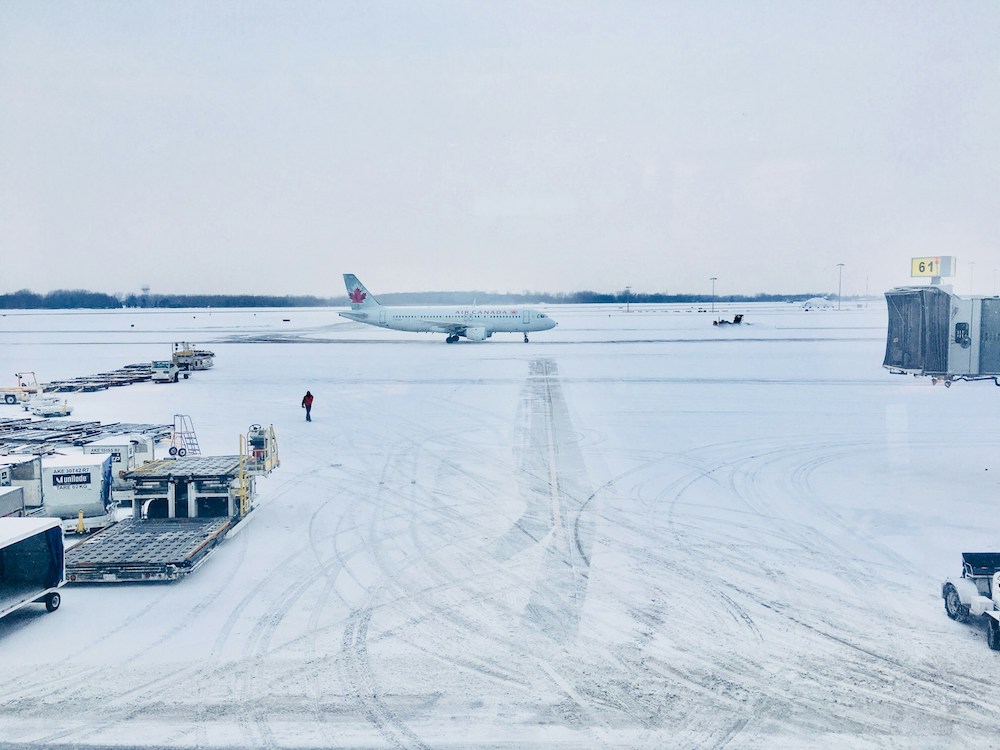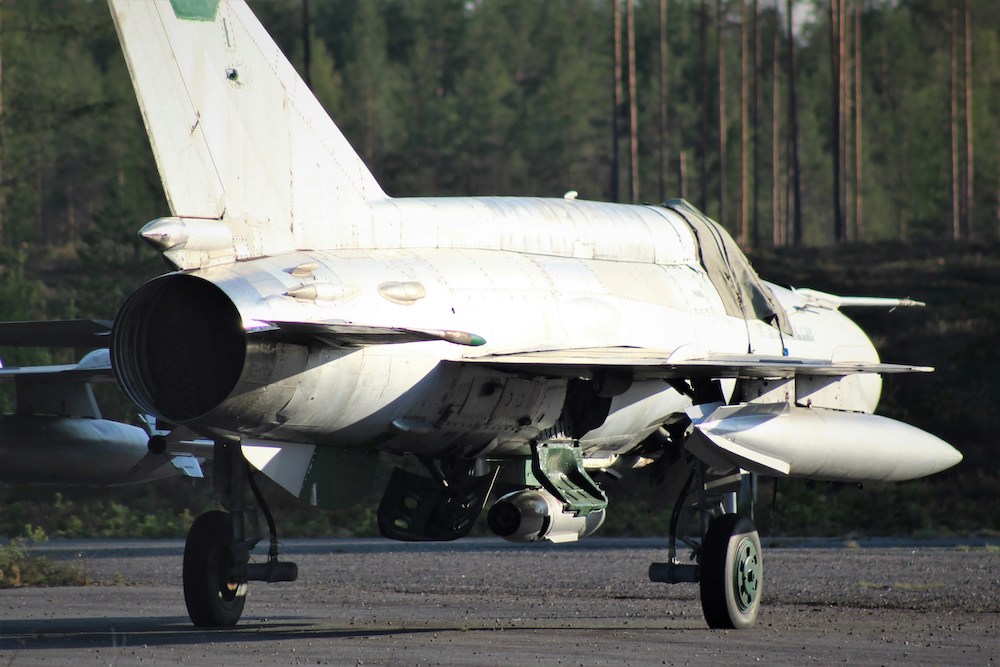
As an aircraft navigates different altitudes and climates, it encounters several environmental challenges, among which ice formation on its surfaces poses a serious threat. Ice formation on aircraft surfaces, primarily the wings and tail, occurs when the aircraft encounters supercooled liquid droplets in the atmosphere that freeze upon impact with any surface below 0°C. This phenomenon is most common in the stratus clouds typically found in stable air masses where temperatures are below freezing but above the altitude where water vapor typically forms ice crystals.
The aerodynamic impact of ice formation and accumulation is profound. It disrupts the aircraft’s smooth flow of air over its wing surface thereby causing a reduction in lift generation. This disturbance may also increase drag, forcing the plane to use more fuel just to maintain its speed and altitude. In extreme situations, ice buildup can lead to an airplane stall where a wing fails to produce sufficient lift for the plane’s support thereby putting the lives of those onboard at risk.
Additionally, an aircraft’s moving parts, such as ailerons, rudders, and elevators, may be affected by ice, ultimately limiting their movements and response.
For these reasons, the importance of anti-icing and de-icing systems designed to safeguard aerodynamic efficiency cannot be overstated. Such systems help prevent (or minimize) ice formation so that planes can operate in almost all weather conditions.
Aircraft Anti-icing Systems
Anti-icing systems in aircraft are designed to prevent ice formation on critical surfaces such as the wings, propellers, engine intakes, and control surfaces. These systems employ various technologies and methods to ensure that ice does not accumulate and affect the aircraft’s performance and safety.
Pneumatic boot systems
One of the oldest forms of anti-icing technology is the pneumatic boot system, usually employed on wing-leading edges and control surfaces. These systems consist of rubber boots that can inflate or deflate depending on whether they are turned on or off. Upon activation, boots inflate, thereby causing any ice trying to form to crack and get dislodged because there is a change in the shape of the surface.
While not preventing ice formation outright, these boots’ cyclic inflation and deflation help keep critical surfaces clear of significant ice build-up. Pneumatic boots are particularly popular on smaller, propeller-driven aircraft.
Electrical Heating Systems
Electrical heating systems represent a more modern approach to anti-icing, utilizing electrical resistance to generate heat directly on the surfaces prone to icing. The systems integrate electric heating elements with the surface or connect them to certain places such as wing leading edges, engine inlets, and pitot tubes.
Using electricity to generate heat, this method effectively prevents ice by maintaining the surface temperature above zero degrees Celsius. Among all other heating systems, electrical ones provide accurate control over the heating process and are commonly used on commercial jets because they are efficient and reliable.
Chemical anti-icing system
Chemical anti-icing systems protect aircraft from ice formation by employing fluids injected into the airplane’s exterior or through specific channels within the airframe. These fluids act either by reducing the freezing temperature of water or by creating a slick surface that prevents ice build-up.
Some chemical systems are designed as “weeping wings,” where anti-icing fluid is distributed through tiny holes in the leading edges of the wings, creating a protective film that prevents ice from forming. Chemical anti-icing is particularly useful for aircraft parts where mechanical or electrical systems might be less effective or practical.
De-icing Systems
De-icing systems are essential for aircraft safety, especially when ice has already formed on the aircraft’s surfaces. These systems are designed to remove ice, ensuring the aircraft maintains optimal aerodynamic performance and safety. Various methods are employed, each with its mechanism of action.
Thermal Systems
Thermal de-icing systems utilize heat to melt ice that has formed on the aircraft’s surfaces. One common application is heated wings, where heat is generated electrically or through hot air from the engines. In electrically heated systems, heating elements embedded in the wings’ leading edges generate sufficient heat to melt the ice, which is then swept away by the airflow.
In hot air systems, known as bleed air systems, hot air from the engines is routed through the wings and other critical surfaces, warming them just enough to melt and detach any accumulated ice. These systems are particularly effective and are commonly used in larger aircraft, including commercial jets.
Chemical Deicing Fluids
Chemical de-icing fluids involve applying liquid substances that reduce the freezing point of water, leading to the melting of ice and facilitating its removal. This procedure is very common not only as a measure before snowfall but also as a procedure for removing ice once it has already formed, especially on the ground before take-off.
The de-icing fluids, divided into different classes according to their composition and operational properties, are normally sprayed onto the airplane with the help of special ground machinery. The purpose of these fluids is to ensure that they are sticky enough to adhere to the aircraft’s surface for long periods, where they can melt the ice, while still being liquid enough to slide away from the plane and take the melted ice with them.
Mechanical Methods
Mechanical de-icing involves physically breaking or removing ice from the aircraft’s surfaces. One example is the use of pneumatic boots in a de-icing capacity, where the inflation of the boots breaks up accumulated ice, allowing it to be carried away by the airstream.
Another mechanical method is manual removal, which might involve personnel using tools to physically scrape or brush ice off the aircraft. This method is more common during ground operations and will require careful handling to avoid damaging the aircraft’s surfaces.
Key Differences Between Anti-icing and De-icing
Purpose and Timing
- Anti-Icing: Designed to stop ice from forming on the aircraft’s surfaces. It’s a proactive measure before ice formation starts, typically when flying into known icing conditions.
- De-Icing: Focuses on removing ice after it has already formed on the aircraft. It’s a reactive measure to eliminate accumulated ice on the aircraft’s surfaces.
Operational Phase
- Anti-Icing: Primarily used during flight to prevent the buildup of ice. Can also be used on the ground in anticipation of freezing conditions.
- De-Icing: Often used on the ground before takeoff to clear accumulated ice but can also be employed in flight to remove ice.
Technology and Methods
- Anti-Icing: Utilizes systems like heated leading edges, weeping wings (which release anti-icing fluids), and pneumatic boots in a preventive mode to stop ice from adhering.
- De-Icing: Employs thermal systems (like heated wings or engine bleed air), chemical de-icing fluids sprayed onto the aircraft, and mechanical methods (such as inflatable boots that break ice off).
Application Conditions
- Anti-Icing: Activated based on weather forecasts, atmospheric conditions, and temperature, often before entering conditions conducive to icing.
- De-Icing: Triggered after visual inspection or sensor detection confirms ice accumulation, regardless of the current atmospheric conditions.
System Design
- Anti-icing: When it comes to anti-icing, the systems cover the major parts of an aircraft that need protection from ice formation, including wing-leading edges and engine intakes. This ensures these areas are free from ice build-up and maintain proper aerodynamic characteristics.
- De-Icing: Systems are designed to remove ice from critical surfaces efficiently and may be localized to areas where ice has a significant impact on performance and safety.
Energy and Resource Consumption
- Anti-Icing: This can be energy-intensive, especially for thermal and pneumatic systems, due to the need to continuously prevent ice formation over large surface areas.
- De-Icing: While also potentially energy-intensive, particularly for thermal de-icing, it’s often used intermittently and targeted more precisely, which can sometimes reduce overall energy consumption compared to continuous anti-icing operations.
Environmental Impact
- Anti-icing: It can be a problem for some parts of the world, with the continuous use of chemical anti-icing agents contributing to environmental issues such as chemical runoff and energy consumption.
- De-icing: Chemicals can affect the environment, but technological advancements in eco-friendly formulations are now showing much progress in fighting these impacts.
How Anti-Icing and De-icing Systems Work Together
De-icing and anti-icing systems are not completely separate but are two parts of the whole system, which can be seen as different aspects of a holistic ice protection plan. Properly coordinated use of these systems is essential for aircraft’s safe and efficient performance in cold weather.
Integrated Ice Protection Strategy
The combination of anti-icing and de-icing systems offers a layered defense strategy, against the dangers of ice buildup. Anti-icing systems are typically activated to prevent icing situations. Pilots or automated systems trigger icing measures upon entering areas prone to icing risks, such as cloud layers with supercooled liquid droplets or when temperature and humidity indicate a high chance of ice formation.
Despite measures, ice accumulation may still occur during severe weather conditions or if the anti-icing systems are overwhelmed or activated too late. In cases de-icing systems step in to remove any formed ice. When sensors detect ice buildup, these systems can be manually initiated by the pilot or automatically activated by the aircraft’s systems.
Decision-Making Processes
Decision-making regarding the activation of anti-icing or de-icing systems involves a mix of pilot discretion sensor data and sometimes automated system responses, including:
- Weather Forecast and Reports: Pilots rely on information sources like weather forecasts and reports for pre-inflight updates that offer crucial insights into icing-friendly conditions.
- Visual Inspection: During critical phases of flight, the pilots keep an eye out for any ice forming in areas of the aircraft.
- Aircraft Sensors: Advanced sensors installed in planes can pick up on ice buildup or situations that could lead to icing, giving real-time information to help with decision making.
- Aircraft Performance Indicators: Any unexpected changes in how the aircraft performs, like fluctuations, in speed, altitude, or engine function might signal that ice has started to accumulate.
Based on this information, pilots determine the appropriate use of anti-icing and de-icing systems. For instance, they might activate anti-icing systems when entering cloud layers at temperatures where icing is known to occur or engage de-icing systems when performance indicators suggest ice accumulation despite anti-icing measures.
Key Takeaways: Anti-Icing and De-icing Systems in Aviation
Keeping the distinction between anti-icing and de-icing systems in mind is critical for ensuring aircraft safety and optimal performance. Despite the common goal shared by both of these, that is mitigating ice buildup, they are still fundamentally different when it comes to operation and application.
An anti-icing system is proactive, prohibiting ice from forming on important parts of an aircraft using methods such as electrical heating or chemical treatments. These systems are necessary to maintain an airplane’s aerodynamic efficiency and structural integrity under icy conditions. De-icing systems, in contrast, are reactive types; working only after ice formation has occurred through methods like thermal heating or the use of chemicals that enable normal functioning and safety return to an airplane.
Mastering such complexities paves the way for a better understanding of inherent flight safety levels necessary as a technical grounding and within each journey. They have been evolving with changing aviation technology promising improved efficiency and reduced environmental implications making them central components towards safer air transportation moving forward. This means that every professional aviator must have a solid knowledge of anti-icing and de-icer systems to ensure a safe operation that meets today’s highest aviation standards.
Written by Michael Olusoji
Michael Olusoji is a distinguished aviation writer with over five years of in-depth expertise.
His comprehensive research and analytical prowess have culminated in a myriad of articles that dissect the intricate facets of the aviation sector, particularly the engineering nuances of aircraft components.



